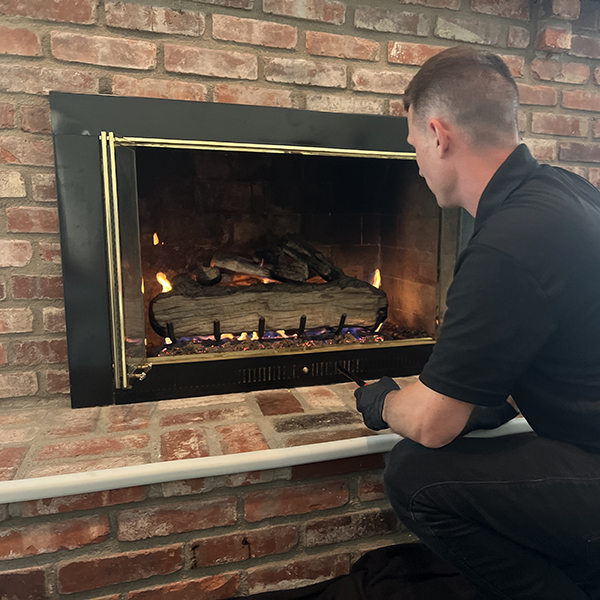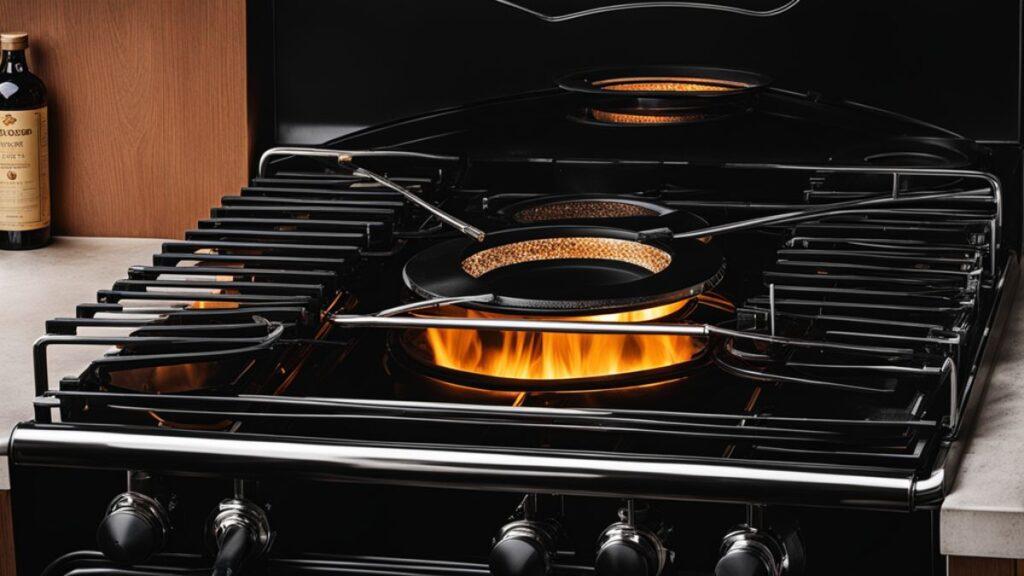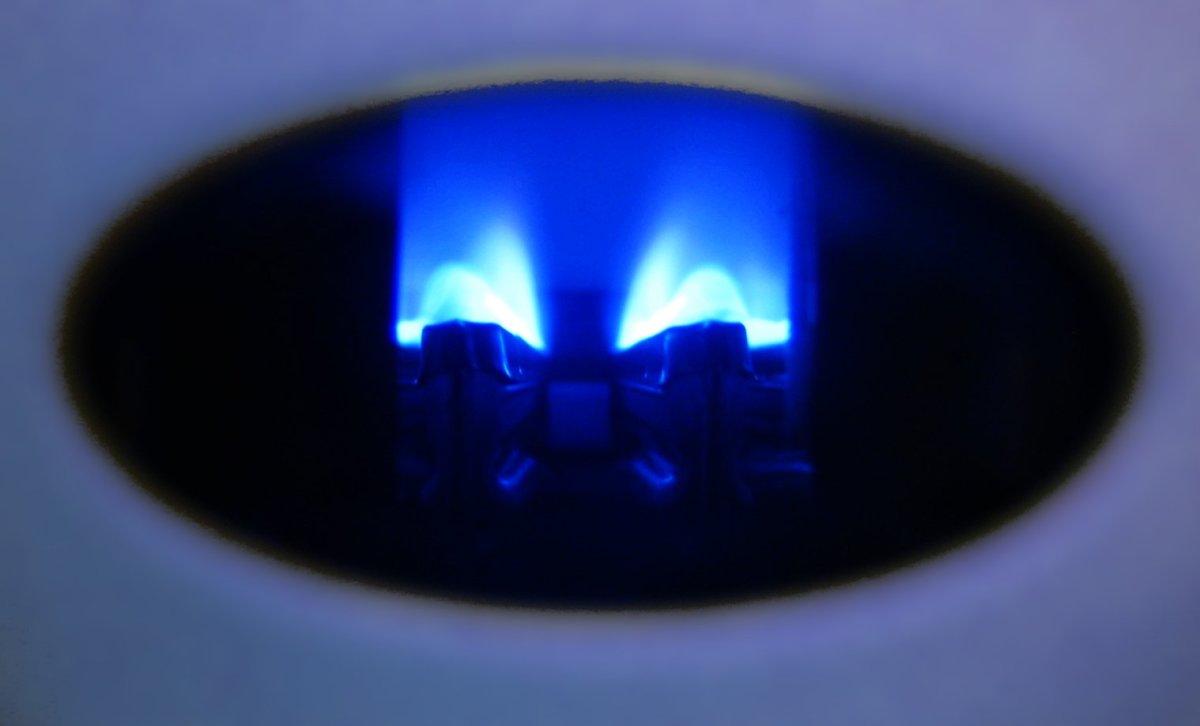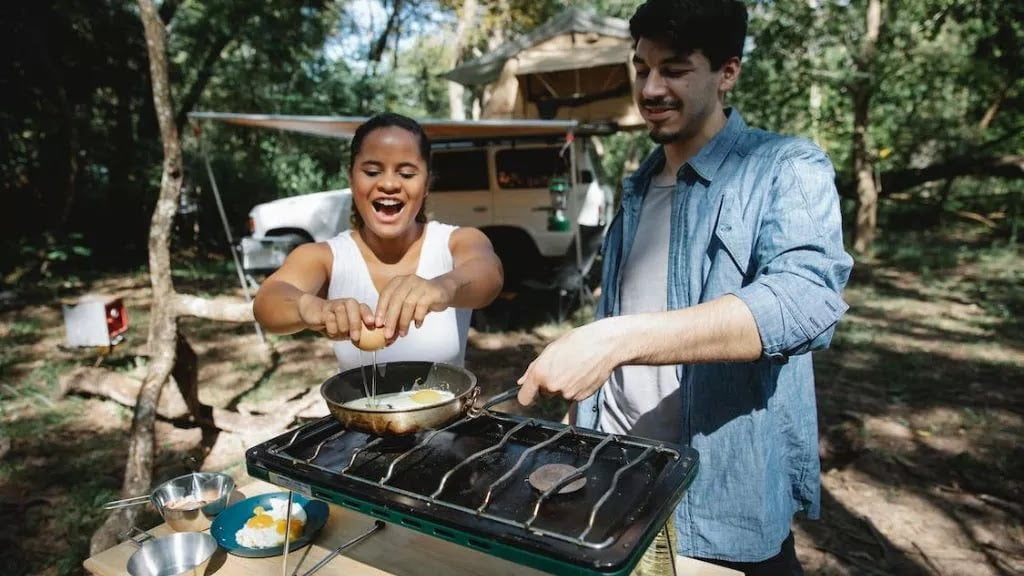
We may earn money or products from the companies mentioned in this post.
A gas stove pilot light that keeps going out is often due to a faulty thermocouple or clogged pilot tube. Regular maintenance checks can prevent this common issue.
A gas stove pilot light is a small flame that ignites the main burner. It’s essential for the proper functioning of your stove, but sometimes you may encounter the annoyance of it repeatedly extinguishing. Dealing with a faulty pilot light can be frustrating, but understanding the common reasons for this problem is the first step to a solution.
Dirt accumulation, drafts, and a malfunctioning thermocouple are among the top culprits. Homeowners can usually address some of these issues on their own, but certain situations might require professional help. Ensuring the pilot light works correctly is not just a matter of convenience; it’s also crucial for safety and efficiency in the kitchen.
Read More: Unleash Culinary Excellence: Top 6 Pots and Pans for Gas Stoves

Credit: chimneysolutionsindiana.com
Common Reasons For Pilot Light Issues
A pilot light that keeps going out can be a source of frustration. Gas stoves rely on a steady pilot flame to ignite the burners. When this flame extinguishes unexpectedly, cooking plans may come to a halt. Recognizing why pilot lights go out is crucial for a solution. This section details the typical causes behind pilot light problems. Understanding these can help fix the issue quickly.
Dirty Pilot Tube
A clogged pilot tube is a common culprit. Dirt and debris can obstruct the gas flow, preventing the pilot light from staying lit. Regular maintenance can prevent these blockages. The pilot tube needs cleaning for optimal performance. Here’s how to keep the pilot tube in prime condition:
- Turn off the gas and let the stove cool.
- Remove the pilot tube’s cover to access the orifice.
- Clean any visible dirt with a soft brush.
- Use a fine needle to clear the orifice gently.
- Reassemble and test the pilot light.
Faulty Thermocouple
The thermocouple plays a key role in safety. It detects the pilot flame. If it malfunctions, the gas supply cuts off. This leads to the pilot light going out. Signs of a faulty thermocouple include:
| Sign | Detail |
|---|---|
| Unlit Pilot | The pilot light won’t stay lit even after cleaning. |
| Inconsistent Flame | The flame fluctuates or changes color. |
| No Reaction | The thermocouple shows no reaction to flame presence. |
Replacement of a defective thermocouple is often the solution. Consult a professional for proper installation.
Weak Flame Adjustments
The pilot light’s flame size is adjustable. A flame too weak will not heat the thermocouple enough, causing the pilot to go out. Adjusting the flame is straightforward. Follow these steps for a stable flame:
- Locate the flame adjustment screw near the pilot light.
- Turn the screw clockwise for a smaller flame, and counterclockwise for a larger one.
- Adjust to a steady blue flame that envelops the thermocouple.
- Check the flame after adjustments to ensure stability.
Read More: Induction Pan on Gas Stove: Perfect Heat Mastery!
Preliminary Safety Measures

Dealing with a gas stove can be daunting. Safety comes first. Knowing the right steps to take before troubleshooting your pilot light is crucial. Proper safety measures prevent potential hazards associated with gas appliances. Let’s get started on the precautionary steps you should follow to ensure a secure environment.
Turn Off Gas Supply
Before you inspect your gas stove pilot light, turn off the gas. Find the gas valve near your stove. Rotate the valve clockwise to shut off the supply. This simple act can protect your home from gas leaks and allow you to work safely.
Await Gas Dissipation
Give time for any accumulated gas to dissipate. Open windows or doors nearby to assist this process. Wait several minutes. Ensure the smell of gas has completely gone before you attempt to relight the pilot or explore further.
Safety Gear Recommendations
- Gloves: Wear thick gloves to protect your hands from heat.
- Goggles: Keep your eyes safe from accidental sparks.
- Mask: Avoid breathing in harmful fumes with a good-quality mask.
With these safety precautions in place, you’re now prepared to address your pilot light issue effectively and without risk.
Read More: Can Induction Cookware Be Used on Gas Stove: Ultimate Guide
Step-by-step Troubleshooting Guide
Encountering a gas stove with a pilot light that won’t stay lit can be frustrating. To resolve this common kitchen issue, here’s a succinct troubleshooting guide that helps you identify and fix the problem with easy-to-follow steps. Let’s dive into the process together, highlighting key areas to check.
Inspecting The Pilot Light
Start by inspecting the pilot light. A strong, steady flame is essential. A flickering flame suggests problems. Follow these points:
- Ensure the stove is cool.
- Remove the stove top and burner covers.
- Locate the pilot light.
- Observe the flame’s color and behavior.
Cleaning The Pilot Tube
A clogged pilot tube often leads to light outages. To clean it:
- Turn off the gas and let the stove cool.
- Find the pilot tube near the burner.
- Use a needle to remove debris.
- Blow gently through the tube.
Clean carefully to avoid damage.
Testing The Thermocouple
A faulty thermocouple is a common culprit. Test it with these tips:
- Locate the thermocouple next to the pilot light.
- Turn on the gas and ignite the pilot.
- Hold the flame steadily for 20-30 seconds.
- Release the button. If the light goes out, it may be the thermocouple.
Replace the thermocouple if it fails the test.
Read More: Can Induction Base Cookware Be Used on Gas Stoves? Myth-Busting Facts!
Diy Fixes For The Persistent Problem
Is your gas stove pilot light giving you trouble by constantly going out? It’s a common and very frustrating problem. You might think you need a professional right away. But hold on! With a few simple fixes, you can take the DIY route. In the sections below, you’ll find easy-to-follow solutions to keep that flame burning bright.
Adjusting The Flame
Correct flame adjustment is crucial for a pilot light. Ensure it’s not too weak to withstand drafts. Sometimes a simple tweak does the trick:
- Locate the pilot flame’s screw or knob.
- Follow your stove’s manual to adjust correctly.
- Aim for a steady blue flame with no yellow tips.
Thermocouple Replacement
The thermocouple is a safety device that keeps gas flowing only if the pilot light is on. A faulty thermocouple can shut off gas and extinguish the flame. Here’s how to replace it:
- Turn off the gas and let the stove cool.
- Remove the thermocouple from the pilot assembly.
- Buy a new thermocouple that matches your stove model.
- Install it following the stove’s manual.
When To Call A Professional
Sometimes, DIY won’t cut it. You need expert help. Signs it’s time to call a professional include:
| Problem | Sign |
|---|---|
| Complex Issues | Adjustment and replacement don’t work. |
| Gas Smell | Noticeable odor even after fixing the light. |
| Unstable Flame | Flame flickers constantly after adjustment. |
If you encounter these signs, stop your DIY attempts. Contact a certified professional to ensure safety and proper repair. Remember, safety comes first!
Read More: Top-Rated Best Cookware for Gas Stoves: Reviews and Recommendations
Preventative Maintenance Tips
Preventative maintenance is crucial for a gas stove’s longevity and safety. Understanding the steps to prevent a pilot light from repeatedly going out not only extends the lifespan of your stove but also ensures your kitchen remains a safe environment for all your culinary exploits. These practical tips can help avoid common issues before they turn into more significant problems.
Regular Cleaning Routines
Over time, food particles and debris can accumulate around your stove’s pilot light. This blockage can snuff out the flame. Keep the area around the pilot light clean, and ensure the gas stove’s orifices are free from obstructions. Follow this simple routine:
- Turn off your gas stove and allow it to cool.
- Remove the burners to access the pilot light area.
- Use a soft brush to gently clean the orifices.
- If necessary, employ a needle to clear hard-to-reach debris.
- Wipe down with a dry cloth before reassembling.
Professional Inspections
Annual checkups by professionals can catch issues you might miss. Gas leaks or worn-out components are serious dangers. Schedule an inspection yearly:
- Contact a certified technician specializing in gas appliances.
- Ensure they inspect the pilot light, thermostat, and safety valves.
- Ask for a detailed report on your gas stove’s health.
Upgrades And Replacements
Parts wear out over time; staying ahead with timely upgrades and replacements is wise. Consider these suggestions:
| Component | Signs of Wear | Action |
|---|---|---|
| Pilot Light Assembly | Frequent outages | Replace assembly |
| Thermocouple | Weak flame or no flame | Replace thermocouple |
| Gas Valve | Stiff to operate | Install new valve |

Credit: dengarden.com
Navigating Warranty And Repairs
Is your gas stove pilot light refusing to stay lit? The frustration is real, but worry not. You might have warranty-related solutions and a repair path at your disposal. Let’s crack the warranty code and find repair solutions that won’t leave your wallet empty.
Understanding Warranty Coverage
Your stove’s warranty might be the hero you need. Check your user manual or look online for specifics. Warranties often cover pilot light issues, which means repairs could cost nothing.
- Duration of coverage
- Parts included
- Service fees waived?
Keep receipts and records; they’re your proof of purchase. They show you’re within the warranty period.
Finding Qualified Repair Services
To fix your issue right, find a trusted technician. A certified expert ensures your repair sticks.
- Search for local authorized service centers
- Read reviews and ratings
- Verify technician certifications
An authorized repair service stands behind their work. They have the skills your stove needs to relight and function properly.
Estimating Repair Costs
Repair costs can vary. Know what you might pay upfront. Ask for an estimate before agreeing to any work.
| Part | Cost Range |
|---|---|
| Thermocouple | $20 – $150 |
| Service Fee | $50 – $100 |
Keep in mind: If you’re under warranty, you might not see these charges.
Frequently Asked Questions Of Gas Stove Pilot Light Keeps Going Out
How Do You Fix A Pilot Light That Keeps Going Out?
To fix a pilot light that keeps going out, first, ensure the thermocouple is clean and positioned correctly. If the issue persists, check for drafts or change the thermocouple. Always consult your appliance’s manual or call a professional for safe handling.
Why Won’t My Gas Pilot Light Stay Lit?
A gas pilot light may not stay lit due to a faulty thermocouple, a clogged orifice, or inadequate gas flow. Regular maintenance can help prevent these issues.
Why Does My Gas Stove Keep Blowing Out?
Your gas stove may blow out due to drafts, low gas pressure, or a dirty burner. Ensure no airflow disruptions and check for proper gas supply. Regular maintenance can prevent this issue.
Why won’t My Gas Stove Stay Lit?
A gas stove might not stay lit due to a dirty igniter, a malfunctioning thermocouple, or a clogged burner port. Ensure regular maintenance for reliable performance.
Conclusion
A persistent pilot light issue can be frustrating. Yet, understanding common causes is key to a reliable fix. Regular maintenance and professional checkups are your best defense. Don’t let a stubborn flame disrupt your kitchen routine. Seek help early and cook with confidence.






